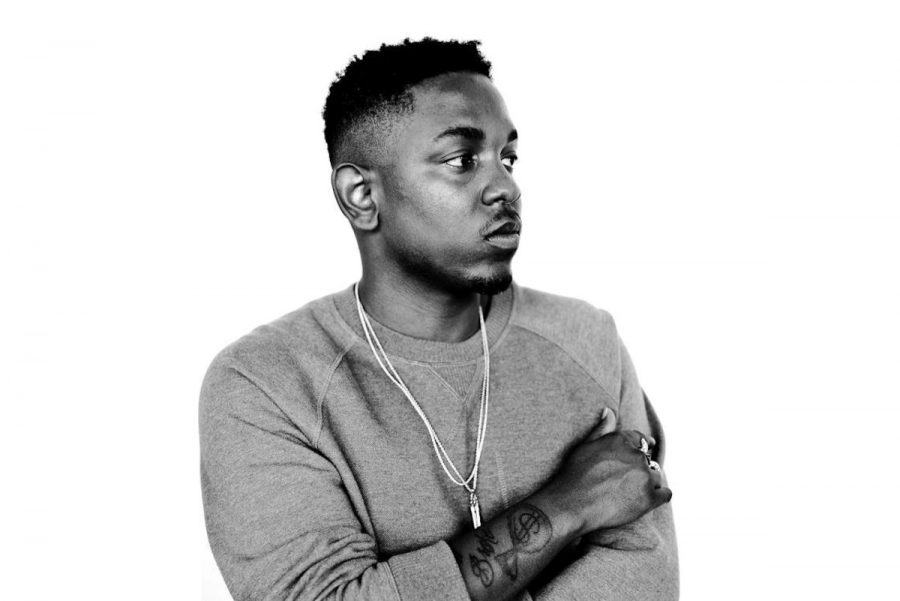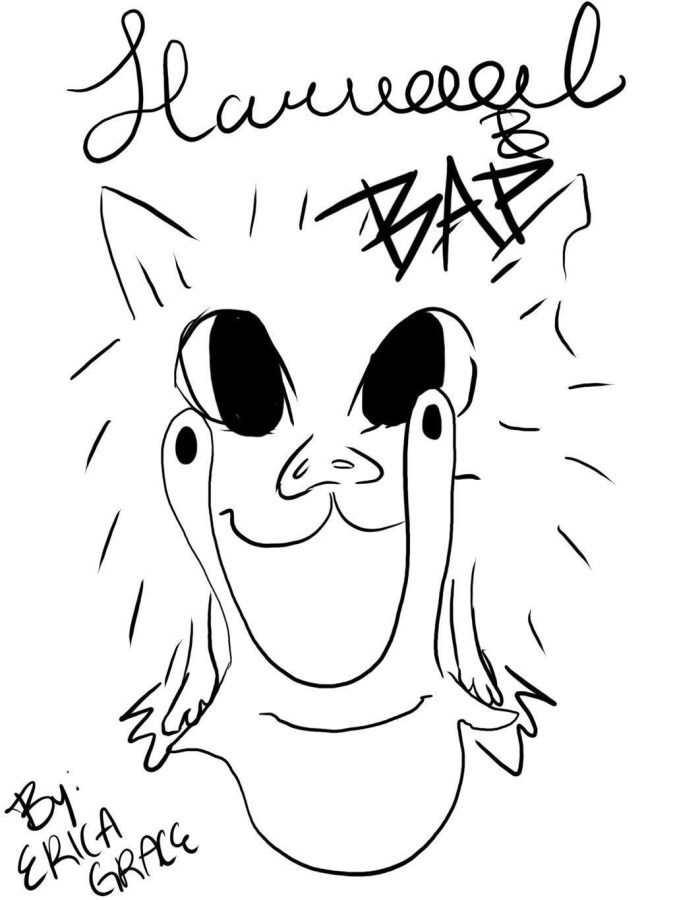By Siddharth Jejurikar ’16, Contributor
Kendrick Lamar’s new album, To Pimp a Butterfly, is a goliath of artistic value, featuring innovative and genre-redefining musical production, extremely thought-provoking lyrics, and an incredibly emotional tone. Kendrick Lamar shocked the world in 2012 with the stellar Grammy-nominated album, Good Kid m.A.A.d City, a narrative depiction of the lives and struggles of underprivileged black youth in America. Good Kid m.A.A.d City faced both commercial and critical success due to Kendrick’s unique music, lyrical mastery, and artistic meaning. Less recognized and not nearly as famous is Kendrick’s first album, Section.80. Section.80 tackled the duality of the inner-city resident; struggling to find religion, faith, and humanity in a world constantly populated by crime, violence, and drugs. Early listeners of Kendrick regarded Section.80 as a herald, promising a great future for hip-hop and Kendrick himself. The announcement of To Pimp a Butterfly, preceded by the release of three singles (“I”, “The Blacker the Berry”, and “King Kunta”), provoked fervent excitement from many hip-hop fans excited to hear from the west coast star.
To Pimp a Butterfly is completely and utterly different from what I expected. Despite this, I love it. The album abandons the long narrative format from Good Kid, m.A.A.d City in favor of a highly emotional self-reflection from the artist. In Good Kid, m.A.A.d City,Kendrick, continuing the legacy of Nas’s Illmatic, paints a portrait of the inner-city and, more specifically, Compton. In To Pimp a Butterfly Kendrick Lamar continues to tackle the same high-stakes political and cultural issues with America that he does in his first two albums, but also tackles problems within himself: his mistakes, his survivor’s guilt, and his ongoing battle with depression. Some more close-minded fans of Section.80’s style or tracks like “Backseat Freestyle” and “m.A.A.d City” from Good Kid, m.A.A.d City may be disillusioned with To Pimp A Butterfly, which uses significantly more genre-blurring and experimental musical and lyrical sounds. Regardless, to the open-minded listener, To Pimp a Butterfly is a beautiful work and an absolute essential to listen to.
From the beginning you can see Kendrick’s revamped musical style and production in “Wesley’s Theory”, heavy on funk influences. The subtle combination of funk, jazz, and hip-hop that permeates the album gives it a distinct flavor, dissolving the boundaries of genre and creating a perfect storm. Breaking the borders of the typical basic beats behind hip-hop tracks, the album’s originality is driven by unique rhythms, time signatures, flows, and transitions. Kendrick includes some fantastic collaborative work in To Pimp a Butterfly, reinforcing the album’s innovative musical composition. These contributors include: George Clinton, P-funk pioneer and arguably one of the biggest funk legends of all time; Terrace Martin, jazz saxophonist and producer; Bilal, Neo-soul vocalist with an extensive collaborative list beyond Kendrick Lamar; Thundercat, experimental bassist who has worked extensively with Trip-Hop artist Flying Lotus; and Snoop Dogg, another Dr. Dre disciple and a double-platinum rap artist. This massive list of collaborators works towards Kendrick’s goal of innovation and style, creating the fluid and crazy sound that’s embedded in tracks like “For Free?”, where freeform jazz takes control and thrives off Kendrick’s flow. These deep, mellow jazz undertones as well as the popping, energetic funk influences make the record truly memorable.
In the lyrical realm is where Kendrick showcases his genius. Making bold statements on American culture, Kendrick criticizes consumerism in “Wesley’s Theory”, rapping, “What you want you?/ A house or a car?/ Forty acres and a mule, a piano, a guitar?/ Anything, see, my name is Uncle Sam, I’m your dog/M***********you can live at the mall.” Continuing the verse in the same hypnotic voice, “Uncle Sam” pushes Kendrick further and further into this chasm of hedonistic, wealth-celebrating comfort, only to finish with the final theorem and namesake of the song, “I’ll Wesley Snipe you’re a** before thirty-five.” Kendrick doesn’t limit himself to the personification of American culture as a swindler-like Uncle Sam, he repeats this exact stanza much, much later in the album in the song “Allright” under a new beat and voice, except this time changing the character of “Uncle Sam” to “Lucy”, Kendrick’s moniker for the devil. To Pimp a Butterfly continues its social commentary with “The Blacker The Berry”, which gives off a significantly harsher and more brutal tone than the rest of the album. “The Blacker the Berry” brings out the hypocritical duality of the black community in Kendrick’s eyes. He consistently uses the first person in the song, saying “I’m the biggest hypocrite of 2015”or “You hate me don’t you?/ You hate my people, your plan is to terminate my culture.”but in reality is using the first person as a synecdoche that refers to the entirety of black America. The song breaks down its meaning in a powerful final couplet, “So why did I weep when Trayvon Martin was in the street?/ When gang banging make me kill a n**** blacker than me?” This last line, along with the entirety of the final verse, contrasts the self-destructive nature of gang violence with the racial fervor following the events in Florida as Kendrick hopes to dissolve the hypocrisy he sees in the world.
Not only does Kendrick analyze the politics and culture of America, but also analyses himself in many of the deeply introspective tracks. With each song in the album after “King Kunta” Kendrick adds a new line to a poem, starting simply with “I remember you was conflicted.”This poem, finally revealed fully in the final track “Mortal Man”, is the goal of the album. Song by song Kendrick breaks himself down and struggles to find clarity in himself, little by little understanding more, adding new lines to the poem piece by piece, he finds his answer. Kendrick believes he was lifted out of Compton and the streets by greed and the devil, Lucy, who introduced him to wealth. Initially Lucy claimed to want to help Kendrick, as she did with other rappers. As “Lucy” says in the track “Momma”, “Lucy give you no worries/ Lucy got million stories/ About these rappers that I came after when they was boring/ Lucy gone fill your pockets/ Lucy gone move your mama out of Compton/ Inside the gi-gantic mansion like I promised/ Lucy just want your trust and loyalty.” But like any deal with the devil, it back fired, as Kendrick says in his poem, “I remembered you was conflicted/ Misusing your influence, sometimes I did the same/ Abusing my power full of resentment/ Resentment that turned into a deep depression.” Depression. Depression is a battle for anyone who fights it, and Kendrick is no exception. In the track “u” Kendrick turns the tables and talk to himself in the second person. Angry and drunk, swishing his whisky, clanging his glass, sobbing gently to himself, he accuses himself of everything—generating unparalleled self-loathing. In 2013 Kendrick Lamar’s childhood friend Chad Keaton was killed in a drive-by shooting. Kendrick blames himself for the incident—the survivor’s guilt that plagues him—“ You ain’t no brother, you ain’t no disciple, you ain’t no friend/ A friend never leave Compton for profit or leave his best friend/ Little brother, you promised you’d watch him before they shot him.” When Kendrick returns home in “Momma” he learns of his ignorance and begins to reach back into his roots and his childhood,reconnecting with himself. In a Walt Whitman-esque catalogue, Kendrick Lamar lists everything he “knows” from religion to the street- only to build a turn in the last couplet of the verse, saying, “Until I realized I didn’t know s***/ The day I came home.” Though Kendrick slowly reaches his (tentative) resolution in the final track, “Mortal Man”, it cannot be described in words. The culmination of the entire record is embodied in that track, with its surprising faux-interview with deceased hip-hop legend Tupac Shakur. “Mortal Man” and “I” comprise the tail end of the album, showing Kendrick’s self-actualization and recovery. The record ends on a perfect note; mirroring the themes and messages of the work as whole while reaching a conscious and perfectly placed end to the tempest of emotion that is To Pimp a Butterfly.
The raw emotions and feelings on To Pimp a Butterfly will take you on a journey, maybe not a narrative one, as in Good Kid, m.A.A.d City, but definitely a personal one. I can’t synthesize this journey into words, the album can only be experienced. In over half a dozen complete album listens in preparation for this review, I still discovered something new every time, slowly unraveling the extremely dense work with each listen, just as Kendrick slowly unravels himself with each track. This album cannot be absorbed in pieces, and cannot be absorbed in just one listen. In conclusion, To Pimp a Butterfly is not an album about depression and social issues, it’s an album about Kendrick’s search for self-actualization and self-respect, the only cure for the denizens of an ailing society.
Sidd’s Suggestions for Further Listening:
1. Good Kid, m.A.A.d City by Kendrick Lamar: a massively successful piece, Good Kid, m.A.A.d City is another fantastic album delivered by Kendrick using a narrative style. It uses a narrative style to tell the story of a young Kendrick in the streets of Compton, addressing issues like gang violence, drugs, peer pressure, and alcoholism.
2. Phrenology by The Roots: In the theme of albums that break genre barriers, Phrenology, and The Roots in general, provide a view at a different blend of rock and rap. This mixture creates a unique and excellent sound that only The Roots can master.
3. Speakerboxxx/The Love Below by OutKast: Kendrick Lamar isn’t the only hip-hop artist to include funk, soul, jazz, and poetry in his rap; OutKast has been doing it since the beginning. Fans of Kendrick’s To Pimp a Butterfly may understand and appreciate the complexity embedded in songs like “Hey Ya!” from Speakerboxxx/The Love, the only hip-hop album to win the Grammy for “Album of the Year”
4. Illmatic by Nas: This one goes out to fans of Good Kid, m.A.Ad City, providing a unique portrait of the east-coast inner-city with a steady series of amazing tracks. Considered a classic in the hip-hop world, Illmatic is an absolute must for any rap fan’s list.






